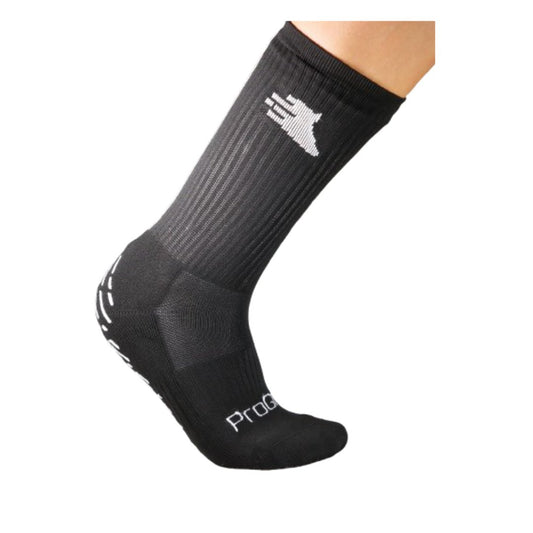Passing is one of the most essential skills in football. Whether you're a central midfielder orchestrating the play, a winger looking to create chances, or a forward trying to link up with teammates, your ability to pass the ball with precision and timing can make or break your team’s performance. In this blog, we’ll discuss effective passing techniques and tips that will help you become a master at passing, improving your game on the pitch.
1. Understand the Different Types of Passes
The first step to mastering passing is understanding the various types of passes and when to use them. Here are the main types of passes every footballer should know:
Short Pass
- Purpose: To maintain possession, control the tempo of the game, or progress the ball over short distances.
- How to Master It: Focus on accuracy rather than power. Use the inside of your foot for better control, and ensure that your first touch sets up the next pass smoothly.
Long Pass
- Purpose: To switch play or bypass the midfield to quickly reach attacking players.
- How to Master It: Use the laces to strike the ball with more power. Ensure your non-kicking foot is well placed, and try to strike the ball cleanly so that it travels accurately over longer distances.
Through Pass
- Purpose: To break through the opposition’s defense by threading the ball to a teammate making a run.
- How to Master It: Look for the space between defenders and aim for a precise, well-timed pass. Use the inside or outside of your foot depending on the angle of the pass and the type of run your teammate is making.
Cross
- Purpose: To deliver a ball into the attacking area from the wings.
- How to Master It: Stay calm and use the inside or outside of your foot to whip the ball in with the right amount of pace and accuracy. Keep your head up to assess your options before delivering the cross.
2. Focus on Your First Touch
Your first touch can make or break the quality of your pass. A poor first touch can put you under pressure, leading to a misplaced pass or a lost possession. Here’s how to perfect your first touch:
- Stay Calm: Be composed when receiving the ball, so you can control it smoothly.
- Positioning: Keep your body in a position that allows you to move in the direction you want to pass the ball. If you’re receiving a pass with your left foot but want to pass with your right, ensure you open your body so that you can smoothly redirect the ball.
- Ball Control: Use different parts of your foot to control the ball. For example, the inside of your foot can be used for a soft first touch, while the outside can help you change direction quickly.
3. Improve Your Passing Range
To be a complete passer, you need to develop a variety of passing ranges. Being able to switch from short, simple passes to long, cross-field passes allows you to adapt to different game situations. Here’s how to improve your range:
- Short Passing: Work on short, quick exchanges with teammates. Keep your body balanced and focus on accuracy over power.
- Long Passing: Practice delivering long passes both on the ground and in the air. Long, precise passes require practice to ensure that the ball travels the right distance and in the right direction.
- Switching Play: Work on passing the ball across the field to change the angle of attack. This requires both accuracy and the ability to read the game.
4. Vision and Awareness
One of the most crucial aspects of mastering passing is having excellent vision and awareness of the game around you. This means knowing where your teammates and opponents are and anticipating where the ball needs to go before it even reaches you. To develop better vision:
- Keep Your Head Up: Always have your head up so you can scan the field. Before receiving the ball, take a quick look around to assess your options.
- Anticipate Movement: Pay attention to your teammates' movements, so you can predict where the ball needs to go and when.
- Be Unpredictable: Don’t just pass to the nearest teammate. Try to open up new passing lanes, looking for creative ways to unlock the defense.
5. Passing Under Pressure
Passing under pressure is a key skill every footballer must develop. The ability to remain calm and composed when under pressure can make a significant difference in maintaining possession and progressing the ball up the pitch. Here are some tips:
- Stay Calm: Don’t rush your pass. Keep your body relaxed, and focus on your technique.
- Use Your Body: Shield the ball with your body to create space when needed. Use subtle body feints to evade a challenge and create a passing lane.
- Quick Decisions: In high-pressure situations, develop the ability to make quick decisions. The quicker you can spot your next move, the more time you’ll have to execute the pass.
6. Practice Passing with Both Feet
Being able to pass with both feet will make you a more versatile and unpredictable player. While many players favor their stronger foot, practicing with the weaker foot can add more options to your passing game. Here’s how to improve:
- Start Slow: Begin by practicing short passes with your weaker foot. Focus on proper technique and gradually increase the difficulty.
- Progress Gradually: As you become more confident, start practicing longer passes and through balls with your weaker foot.
7. Work on Your Communication
Effective communication with teammates is vital for successful passing. Knowing when to pass and when to wait for the right moment depends on your understanding of your teammates' positioning and movements. Use both verbal and non-verbal cues to improve your passing game:
- Verbal Communication: Encourage your teammates to call for the ball or signal for passes.
- Non-Verbal Communication: Make eye contact or use your body language to signal your intentions.
8. Keep Practicing Consistently
Like any skill in football, the key to mastering passing is consistent practice. Spend time in training working on various types of passes in different scenarios. This will help you become more comfortable with passing under various match conditions.
- Training Drills: Incorporate passing drills that focus on both short and long passes, as well as through balls and crosses.
- Small-Sided Games: Play in small-sided games to improve your passing speed and accuracy under pressure.
ProGrip Socks: A Game-Changer for Footballers
Mastering your passing technique isn’t just about skill; it’s also about maintaining stability and control on the pitch. ProGrip Socks provide the support you need to keep your footing secure, giving you better traction and balance when receiving and passing the ball. With enhanced grip inside your boots, ProGrip Socks ensure that you stay comfortable and focused on your game, no matter the conditions.
Conclusion: Passing with Precision and Confidence
Mastering the art of passing in football is crucial for becoming a well-rounded player. Whether you’re executing a short pass, threading a through ball, or delivering a cross into the box, your ability to pass with precision and accuracy will make you a valuable asset to your team. By practicing different techniques, improving your vision, and focusing on your first touch, you can become a passing maestro.
And don’t forget, wearing the right gear—like ProGrip Socks—can help you maintain balance and stability, ensuring that every pass is a step toward victory! Use code BLOG10 for 10% off!!





